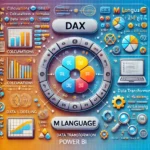In the realm of project management, choosing the appropriate methodology is crucial to the success of any endeavor. Agile and Waterfall are two prominent project management approaches, each with its own set of principles and practices. While both methodologies aim to achieve project objectives, they have distinct differences that can significantly impact project outcomes. In this blog post, we will delve into the nuances of Agile vs. Waterfall, exploring their characteristics, advantages, and drawbacks, to help you make an informed decision when selecting the best fit for your project.
Waterfall Methodology: A Sequential Approach to Project Management
The Waterfall methodology is a traditional and linear approach to project management, wherein each phase follows a sequential order. Project progress flows downwards, much like a waterfall, with one phase leading to the next in a step-by-step fashion. Requirements are thoroughly documented at the outset, and progress is evaluated at the end of each phase. Once a phase is completed, it is challenging to make changes without potentially disrupting subsequent stages.
Key Phases of Waterfall
- Requirements Analysis
- Design
- Implementation
- Testing
- Deployment
- Maintenance
https://synapsefabric.com/2023/07/22/selenium-vs-beautiful-soup-unleashing-the-power-of-web-scraping/
Advantages of Waterfall
- Clear structure and well-defined phases for easy project management.
- Suitable for projects with stable requirements and a fixed scope.
- Provides clear documentation and progress evaluation at each stage.
Drawbacks of Waterfall
- Limited flexibility for adapting to changing requirements during the project.
- Potential for delays and increased costs if issues are identified late in the process.
- Less customer involvement during development, which can lead to misalignment with expectations.
Agile Methodology: An Iterative and Collaborative Approach
Agile is an iterative and incremental project management approach that prioritizes customer collaboration and continuous improvement. Unlike the linear nature of Waterfall, Agile encourages frequent iterations, allowing teams to gather feedback, adapt, and refine the project’s direction. It emphasizes delivering small, valuable increments of work in short iterations called sprints, ensuring that the project stays aligned with customer needs and expectations.
Key Principles of Agile (from the Agile Manifesto)
- Individuals and interactions over processes and tools
- Working software over comprehensive documentation
- Customer collaboration over contract negotiation
- Responding to change over following a plan
Advantages of Agile
- Flexibility to accommodate changing requirements and customer feedback.
- Regular opportunities for customer involvement and continuous improvement.
- Faster time-to-market due to incremental delivery of features.
Drawbacks of Agile
- Requires active customer involvement and feedback throughout the project.
- Less suitable for projects with rigid, well-defined requirements.
- Can be challenging to manage for larger, complex projects.
https://synapsefabric.com/2023/07/22/agile-vs-devops-unraveling-the-differences-for-modern-software-development/
Agile vs. Waterfall: Comparing the Approaches
Flexibility
- Waterfall: Less flexible, with changes difficult to implement once a phase is completed.
- Agile: Highly flexible, allowing for continuous adjustments and adaptations.
Customer Involvement
- Waterfall: Limited customer involvement during development.
- Agile: Regular customer collaboration throughout the project.
Project Documentation
- Waterfall: Emphasizes comprehensive documentation.
- Agile: Values working software over extensive documentation.
The choice between Agile and Waterfall comes down to the nature of your project and the level of flexibility required. Waterfall is suitable for projects with well-defined, stable requirements, whereas Agile shines in dynamic environments where requirements are subject to change. Waterfall provides a structured approach with clear documentation, while Agile promotes frequent customer collaboration and iterative progress.
Ultimately, understanding the nuances of each methodology and considering the unique needs of your project will help you make an informed decision. Whether you opt for the traditional, linear approach of Waterfall or embrace the iterative and flexible nature of Agile, selecting the right project management methodology is key to achieving successful project outcomes and delivering value to stakeholders.






